On May 6, 2010, an expert panel that advises the president on cancer released a watershed report. It said that Americans are facing “grievous harm” from chemicals in the air, food and water that have largely gone unregulated and ignored.
Jeanne Rizzo, R.N., CEO of the Breast Cancer Fund, the leading non-profit organization working to eliminate the environmental causes of breast cancer, said:
“After 40 years of war on cancer, today’s report by the President’s Cancer Panel may finally signal a fundamental shift toward a winning strategy... the government – and institutions that advise the government – have been locked in a cancer-fighting paradigm that has failed to look at the complexity of cancer causation and, in so doing, have missed the opportunity to create a national campaign for cancer prevention ... It is now up to the President, to Congress and to the federal agencies who are responsible for public health to accept the truth in this report and carry out the revolution it calls for.”
What follows is the executive summary. To read the entire report, click here.
Despite overall decreases in incidence and mortality, cancer continues to shatter and steal the lives of Americans. Approximately 41 percent of Americans will be diagnosed with cancer at some point in their lives, and about 21 percent will die from cancer. The incidence of some cancers, including some most common among children, is increasing for unexplained reasons.
Public and governmental awareness of environmental influences on cancer risk and other health issues has increased substantially in recent years as scientific and health care communities, policymakers, and individuals strive to understand and ameliorate the causes and toll of human disease. A growing body of research documents myriad established and suspected environmental factors linked to genetic, immune, and endocrine dysfunction that can lead to cancer and other diseases.
Between September 2008 and January 2009, the President’s Cancer Panel (the Panel) convened four meetings to assess the state of environmental cancer research, policy, and programs addressing known and potential effects of environmental exposures on cancer. The Panel received testimony from 45 invited experts from academia, government, industry, the environmental and cancer advocacy communities, and the public.
This report summarizes the Panel’s findings and conclusions based on the testimony received and additional information gathering. The Panel’s recommendations delineate concrete actions that governments; industry; the research, health care, and advocacy communities; and individuals can take to reduce cancer risk related to environmental contaminants, excess radiation, and other harmful exposures.
Key Issues for Reducing Environmental Cancer Risk
Issues impeding control of environmental cancer risks include those related to limited research on environmental influences on cancer; conflicting or inadequate exposure measurement, assessment, and classification; and ineffective regulation of environmental chemical and other hazardous exposures.

Environmental Cancer Research
Research on environmental causes of cancer has been limited by low priority and inadequate funding. As a result, the cadre of environmental oncologists is relatively small, and both the consequences of cumulative lifetime exposure to known carcinogens and the interaction of specific environmental contaminants remain largely unstudied. There is a lack of emphasis on environmental research as a route to primary cancer prevention, particularly compared with research emphases on genetic and molecular mechanisms in cancer.
Environmental Exposure Measurement, Methodologic, Assessment, and Classification Issues
Efforts to identify, quantify, and control environmental exposures that raise cancer risk, including both single agents and combinations of exposures, have been complicated by the use of different measures, exposure limits, assessment processes, and classification structures across agencies in the U.S. and among nations. In addition, efforts have been compromised by a lack of effective measurement methods and tools; delay in adopting available newer technologies; inadequate computational models; and weak, flawed, or uncorroborated studies.
Some scientists maintain that current toxicity testing and exposure limit-setting
methods fail to accurately represent the natur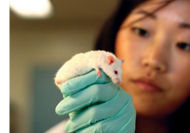 e of human exposure to potentially harmful chemicals. Current toxicity
testing relies heavily on animal studies that utilize doses substantially
higher than those likely to be encountered by humans. These data-and the
exposure limits extrapolated from them-fail to take into account harmful
effects that may occur only at very low doses. Further, chemicals typically
are administered when laboratory animals are in their adolescence, a methodology
that fails to assess the impact of in utero, childhood, and lifelong exposures.
In addition, agents are tested singly rather than in combination.
e of human exposure to potentially harmful chemicals. Current toxicity
testing relies heavily on animal studies that utilize doses substantially
higher than those likely to be encountered by humans. These data-and the
exposure limits extrapolated from them-fail to take into account harmful
effects that may occur only at very low doses. Further, chemicals typically
are administered when laboratory animals are in their adolescence, a methodology
that fails to assess the impact of in utero, childhood, and lifelong exposures.
In addition, agents are tested singly rather than in combination.
Regulation of Environmental Contaminants
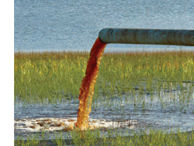 The prevailing regulatory approach in the United States is reactionary
rather than precautionary. That is, instead of taking preventive action
when uncertainty exists about the potential harm a chemical or other environmental
contaminant may cause, a hazard must be incontrovertibly demonstrated
before action to ameliorate it is initiated. Moreover, instead of requiring
industry or other proponents of specific chemicals, devices, or activities
to prove their safety, the public bears the burden of proving that a given
environmental exposure is harmful. Only a few hundred of the more than
80,000 chemicals in use in the United States have been tested for safety.
The prevailing regulatory approach in the United States is reactionary
rather than precautionary. That is, instead of taking preventive action
when uncertainty exists about the potential harm a chemical or other environmental
contaminant may cause, a hazard must be incontrovertibly demonstrated
before action to ameliorate it is initiated. Moreover, instead of requiring
industry or other proponents of specific chemicals, devices, or activities
to prove their safety, the public bears the burden of proving that a given
environmental exposure is harmful. Only a few hundred of the more than
80,000 chemicals in use in the United States have been tested for safety.
U.S. regulation of environmental contaminants is rendered ineffective by five major problems: (1) inadequate funding and insufficient staffing, (2) fragmented and overlapping authorities coupled with uneven and decentralized enforcement, (3) excessive regulatory complexity, (4) weak laws and regulations, and (5) undue industry influence. Too often, these factors, either singly or in combination, result in agency dysfunction and a lack of will to identify and remove hazards.
Sources and Types of Environmental Contaminants
 The line between occupational and environmental contaminants is fine and
often difficult to demarcate. Many known or suspected carcinogens first
identified through studies of industrial and agricultural occupational
exposures have since found their way into soil, air, water, and numerous
consumer products. People from disadvantaged populations are more likely
to be employed in occupations with higher levels of exposure (e.g., mining,
construction, manufacturing, agriculture, certain service sector occupations)
and to live in more highly contaminated communities. The reality of this
unequal burden is not just a health issue, but an issue of environmental justice.
The line between occupational and environmental contaminants is fine and
often difficult to demarcate. Many known or suspected carcinogens first
identified through studies of industrial and agricultural occupational
exposures have since found their way into soil, air, water, and numerous
consumer products. People from disadvantaged populations are more likely
to be employed in occupations with higher levels of exposure (e.g., mining,
construction, manufacturing, agriculture, certain service sector occupations)
and to live in more highly contaminated communities. The reality of this
unequal burden is not just a health issue, but an issue of environmental justice.
While all Americans now carry many foreign chemicals in their bodies, women often have higher levels of many toxic and hormone-disrupting substances than do men. Some of these chemicals have been found in maternal blood, placental tissue, and breast milk samples from pregnant women and mothers who recently gave birth. Thus, chemical contaminants are being passed on to the next generation, both prenatally and during breastfeeding. Some chemicals indirectly increase cancer risk by contributing to immune and endocrine dysfunction that can influence the effect of carcinogens.
Children of all ages are considerably more vulnerable than adults to increased cancer risk and other adverse effects from virtually all harmful environmental exposures. In addition, some toxics have adverse effects not only on those exposed directly (including in utero), but on the offspring of exposed individuals.
Exposure to Contaminants from Industrial and Manufacturing Sources
Manufacturing and other industrial products and processes are responsible for a great many of the hazardous occupational and environmental exposures experienced by Americans. Many of these contaminants-even substances banned more than 30 years ago-remain ubiquitous in the environment because they break down very slowly, if at all. Other industrial chemicals or processes have hazardous by-products or metabolites. Numerous chemicals used in manufacturing remain in or on the product as residues, while others are integral components of the products themselves. Further, in the ongoing quest for more effective and efficient ways of making industrial and consumer products, new chemicals and other substances are being created continually and existing substances are being put to new uses. Limited research to date on unintended health effects of nanomaterials, for example, suggests that unanticipated environmental hazards may emerge from the push for progress.
Exposure to Contaminants from Agricultural Sources
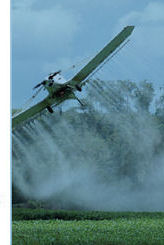 The entire U.S. population is exposed on a daily basis to numerous agricultural
chemicals, some of which also are used in residential and commercial landscaping.
Many of these chemicals have known or suspected carcinogenic or endocrine-disrupting
properties. Pesticides (insecticides, herbicides, and fungicides) approved
for use by the U.S. Environmental Protection Agency (EPA) contain nearly
900 active ingredients, many of which are toxic. Many of the solvents,
fillers, and other chemicals listed as inert ingredients on pesticide
labels also are toxic, but are not required to be tested for their potential
to cause chronic diseases such as cancer. In addition to pesticides, agricultural
fertilizers and veterinary pharmaceuticals are major contributors to water
pollution, both directly and as a result of chemical processes that form
toxic by-products when these substances enter the water supply. Farmers
and their families, including migrant workers, are at highest risk from
agricultural exposures. Because agricultural chemicals often are applied
as mixtures, it has been difficult to clearly distinguish cancer risks
associated with individual agents.
The entire U.S. population is exposed on a daily basis to numerous agricultural
chemicals, some of which also are used in residential and commercial landscaping.
Many of these chemicals have known or suspected carcinogenic or endocrine-disrupting
properties. Pesticides (insecticides, herbicides, and fungicides) approved
for use by the U.S. Environmental Protection Agency (EPA) contain nearly
900 active ingredients, many of which are toxic. Many of the solvents,
fillers, and other chemicals listed as inert ingredients on pesticide
labels also are toxic, but are not required to be tested for their potential
to cause chronic diseases such as cancer. In addition to pesticides, agricultural
fertilizers and veterinary pharmaceuticals are major contributors to water
pollution, both directly and as a result of chemical processes that form
toxic by-products when these substances enter the water supply. Farmers
and their families, including migrant workers, are at highest risk from
agricultural exposures. Because agricultural chemicals often are applied
as mixtures, it has been difficult to clearly distinguish cancer risks
associated with individual agents.
Environmental Exposures Related to Modern Lifestyles
 Conveniences of modern life-automobile and airplane travel, dry cleaning,
potable tap water, electricity, and cellular communications, to name a
few-have made daily life easier for virtually all Americans. Some of these
conveniences, however, have come at a considerable price to the environment
and human health, and the true health impact of others is unconfirmed.
For example, mobile source air emissions (e.g., from cars, trucks, other
passenger vehicles, ships), especially diesel particulate pollution, are
responsible for approximately 30 percent of cancer resulting from air
pollution. Disinfection of public water supplies has dramatically reduced
the incidence of waterborne illnesses and related mortality in the United
States, but research indicates that long-term exposure to disinfection
by-products such as trihalomethanes may increase cancer risk. Chemicals
used for household pest control can become a component of carpet dust,
posing a risk to children when they play on the floor.
Conveniences of modern life-automobile and airplane travel, dry cleaning,
potable tap water, electricity, and cellular communications, to name a
few-have made daily life easier for virtually all Americans. Some of these
conveniences, however, have come at a considerable price to the environment
and human health, and the true health impact of others is unconfirmed.
For example, mobile source air emissions (e.g., from cars, trucks, other
passenger vehicles, ships), especially diesel particulate pollution, are
responsible for approximately 30 percent of cancer resulting from air
pollution. Disinfection of public water supplies has dramatically reduced
the incidence of waterborne illnesses and related mortality in the United
States, but research indicates that long-term exposure to disinfection
by-products such as trihalomethanes may increase cancer risk. Chemicals
used for household pest control can become a component of carpet dust,
posing a risk to children when they play on the floor.
 Sharp controversy exists in the scientific community as to possible adverse
health effects from exposure to low frequency electromagnetic energy.
The use of cell phones and other wireless technology is of great concern,
particularly since these devices are being used regularly by ever larger
and younger segments of the population. At this time, there is no evidence
to support a link between cell phone use and cancer. However, the research
on cancer and other disease risk among long-term and heavy users of contemporary
wireless devices is extremely limited. Similarly, current and potential
harms from extremely low frequency radiation are unclear and require further
study. In addition, ultraviolet radiation from excess sun exposure and
tanning devices has been proven to substantially increase skin cancer risk.
Sharp controversy exists in the scientific community as to possible adverse
health effects from exposure to low frequency electromagnetic energy.
The use of cell phones and other wireless technology is of great concern,
particularly since these devices are being used regularly by ever larger
and younger segments of the population. At this time, there is no evidence
to support a link between cell phone use and cancer. However, the research
on cancer and other disease risk among long-term and heavy users of contemporary
wireless devices is extremely limited. Similarly, current and potential
harms from extremely low frequency radiation are unclear and require further
study. In addition, ultraviolet radiation from excess sun exposure and
tanning devices has been proven to substantially increase skin cancer risk.
Exposure to Hazards from Medical Sources
In the past two decades, improved imaging technologies, nuclear medicine examinations, and new pharmaceutical interventions have made possible significant strides in our ability to diagnose and treat human disease, including cancer. It is becoming increasingly clear, however, that some of these same technologies and drugs that have contributed so greatly to health status and longevity also carry risks.
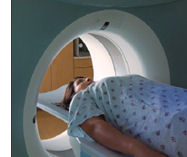 While ionizing radiation exposures from radon, occupational, and other
sources have remained essentially stable over the past 30 years, Americans
now are estimated to receive nearly half of their total radiation exposure
from medical imaging and other medical sources, compared with only 15
percent in the early 1980s. The increase in medical radiation has nearly
doubled the total average effective radiation dose per individual in the
United States. Computed tomography (CT) and nuclear medicine tests alone
now contribute 36 percent of the total radiation exposure and 75 percent
of the medical radiation exposure of the U.S. population. Medical imaging
of children is of special concern; compared with adults, children have
many more years of life during which a malignancy initiated by medical
radiation can develop. Many referring physicians, radiology professionals,
and the public are unaware of the radiation dose associated with various
tests or the total radiation dose and related increased cancer risk individuals
may accumulate over a lifetime. People who receive multiple scans or other
tests that require radiation may accumulate doses equal to or exceeding
that of Hiroshima atomic bomb survivors. It is believed that a single
large dose of ionizing radiation and numerous low doses equal to the single
large dose have much the same effect on the body over time.
While ionizing radiation exposures from radon, occupational, and other
sources have remained essentially stable over the past 30 years, Americans
now are estimated to receive nearly half of their total radiation exposure
from medical imaging and other medical sources, compared with only 15
percent in the early 1980s. The increase in medical radiation has nearly
doubled the total average effective radiation dose per individual in the
United States. Computed tomography (CT) and nuclear medicine tests alone
now contribute 36 percent of the total radiation exposure and 75 percent
of the medical radiation exposure of the U.S. population. Medical imaging
of children is of special concern; compared with adults, children have
many more years of life during which a malignancy initiated by medical
radiation can develop. Many referring physicians, radiology professionals,
and the public are unaware of the radiation dose associated with various
tests or the total radiation dose and related increased cancer risk individuals
may accumulate over a lifetime. People who receive multiple scans or other
tests that require radiation may accumulate doses equal to or exceeding
that of Hiroshima atomic bomb survivors. It is believed that a single
large dose of ionizing radiation and numerous low doses equal to the single
large dose have much the same effect on the body over time.
 Moreover, radiation dose for the same test can vary dramatically depending
on the equipment used, technologist skill, application of dose-reduction
strategies, and patient size, age, and gender. Licensure of imaging and
radiation therapy technologists varies depending on the type of test performed
by the technologist. Some states have only partial regulation; six states
and the District of Columbia have no licensure or regulatory provisions
of any kind.
Moreover, radiation dose for the same test can vary dramatically depending
on the equipment used, technologist skill, application of dose-reduction
strategies, and patient size, age, and gender. Licensure of imaging and
radiation therapy technologists varies depending on the type of test performed
by the technologist. Some states have only partial regulation; six states
and the District of Columbia have no licensure or regulatory provisions
of any kind.
In addition, pharmaceuticals have become a considerable source of environmental contamination. Drugs of all types enter the water supply when they are excreted or improperly disposed of; the health impact of long-term exposure to varying mixtures of these compounds is unknown.
Exposure to Contaminants and Other Hazards from Military Sources
The military is a major source of toxic occupational and environmental exposures that can increase cancer risk. Information is available about some military activities that have directly or indirectly exposed military and civilian personnel to carcinogens and contaminated soil and water in numerous locations in the United States and abroad. However, we may never know the full extent of environmental contamination from military sources. Nearly 900 Superfund sites are abandoned military facilities or facilities that produced materials and products for or otherwise supported military needs. Some of these sites and the areas surrounding them became heavily contaminated due to improper storage and disposal of known or suspected carcinogens including solvents, machining oils, metalworking fluids, and metals. In some cases, these contaminants have spread far beyond their points of origin because they have been transported by wind currents or have leached into drinking water supplies.
Hundreds of thousands of military personnel and civilians in the United
States received significant radiation doses as a result of their participation
in nuclear weapons testing and supporting
 occupations and industries, including nuclear fuel and weapons production,
and uranium mining, milling, and ore transport. Hundreds of thousands
more were irradiated at levels sufficient to cause cancer and other diseases.
These populations include the families of military and civilian workers,
and people-known as “downwinders”-living or working in communities
surrounding or downstream from testing and related activities, and in
relatively distant areas to which nuclear fallout or other radioactive
material spread. Federal responses to the plight of affected individuals
have been unsatisfactory. Those affected lack knowledge about the extent
of their exposure or potential health problems they may face. Similarly,
most health care providers are not aware of cancer and other latent radiation
effects and therefore are unlikely to adequately monitor patients for
these health conditions. Exposure to ionizing radiation related to nuclear
weapons testing is an underappreciated issue worldwide.
occupations and industries, including nuclear fuel and weapons production,
and uranium mining, milling, and ore transport. Hundreds of thousands
more were irradiated at levels sufficient to cause cancer and other diseases.
These populations include the families of military and civilian workers,
and people-known as “downwinders”-living or working in communities
surrounding or downstream from testing and related activities, and in
relatively distant areas to which nuclear fallout or other radioactive
material spread. Federal responses to the plight of affected individuals
have been unsatisfactory. Those affected lack knowledge about the extent
of their exposure or potential health problems they may face. Similarly,
most health care providers are not aware of cancer and other latent radiation
effects and therefore are unlikely to adequately monitor patients for
these health conditions. Exposure to ionizing radiation related to nuclear
weapons testing is an underappreciated issue worldwide.
Exposure to Environmental Hazards from Natural Sources
Most environmental hazards with the potential to raise cancer risk are the product of human activity, but some environmental carcinogens come from natural sources. For example, radon gas, which forms naturally from the breakdown of uranium mineral deposits, is the second leading cause of lung cancer in the United States and the leading cause of lung cancer among people who have never smoked. Radon-induced lung cancer is responsible for an estimated average of 21,000 deaths annually. People who smoke and also are exposed to radon have a higher risk of lung cancer than from either exposure alone.
Although human activities such as mining, ore processing, use of arsenic-containing pesticides, and burning of fossil fuels are major contributors to waterborne arsenic in the U.S., most inorganic arsenic in drinking water is from natural sources. Inorganic arsenic in drinking water has been linked to skin, lung, bladder, and kidney cancer in both sexes and with prostate cancer in men, as well as numerous non-cancerous conditions including endocrine, reproductive, and developmental effects.
Reducing Environmental Cancer Risk: A Call to Action
The burgeoning number and complexity of known or suspected environmental carcinogens compel us to act to protect public health, even though we may lack irrefutable proof of harm. Action is possible at several levels: conducting scientific research to enhance our understanding and by extension, our ability to prevent and respond to environmental carcinogens; enforcing existing policies and regulations that protect workers and the public; implementing policy and regulatory changes that support public health and reduce the burden of cancer; and taking personal action.
The Panel concludes that:
We Need to Determine the Full Extent of Environmental Influences on Cancer.
 At this time, we do not know how much environmental exposures influence
cancer risk and related immune and endocrine dysfunction. Environmental
contamination varies greatly by type and magnitude across the nation,
and the lifetime effects of exposure to combinations of chemicals and
other agents are largely unstudied. Similarly, the cancer impact of exposures
during key “windows of vulnerability” such as the prenatal
period, early life, and puberty are not well understood. Nonetheless,
while these diverse effects often are difficult to quantify with existing
technologies and research methods, in a great many instances, we know
enough to act.
At this time, we do not know how much environmental exposures influence
cancer risk and related immune and endocrine dysfunction. Environmental
contamination varies greatly by type and magnitude across the nation,
and the lifetime effects of exposure to combinations of chemicals and
other agents are largely unstudied. Similarly, the cancer impact of exposures
during key “windows of vulnerability” such as the prenatal
period, early life, and puberty are not well understood. Nonetheless,
while these diverse effects often are difficult to quantify with existing
technologies and research methods, in a great many instances, we know
enough to act.
The Nation Needs a Comprehensive, Cohesive Policy Agenda Regarding Environmental Contaminants and Protection of Human Health.
Environmental health, including cancer risk, has been largely excluded from overall national policy on protecting and improving the health of Americans. It is more effective to prevent disease than to treat it, but cancer prevention efforts have focused narrowly on smoking, other lifestyle behaviors, and chemopreventive interventions. Scientific evidence on individual and multiple environmental exposure effects on disease initiation and outcomes, and consequent health system and societal costs, are not being adequately integrated into national policy decisions and strategies for disease prevention, health care access, and health system reform.
Children Are at Special Risk for Cancer Due to Environmental Contaminants and Should Be Protected.
Opportunities for eliminating or minimizing cancer-causing and cancer-promoting environmental exposures must be acted upon to protect all Americans, but especially children. They are at special risk due to their smaller body mass and rapid physical development, both of which magnify their vulnerability to known or suspected carcinogens, including radiation. Numerous environmental contaminants can cross the placental barrier; to a disturbing extent, babies are born “pre-polluted.” Children also can be harmed by genetic or other damage resulting from environmental exposures sustained by the mother (and in some cases, the father). There is a critical lack of knowledge and appreciation of environmental threats to children’s health and a severe shortage of researchers and clinicians trained in children’s environmental health.
Continued Epidemiologic and Other Environmental Cancer Research Is Needed.
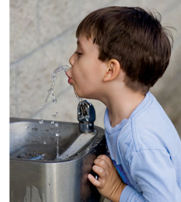 Available evidence on the level of potential harm and increased cancer
risk from many environmental exposures is insufficient or equivocal. The
Panel is particularly concerned that the impact, mechanisms of action,
and potential interactions of some known and suspected carcinogens are
poorly defined.
Available evidence on the level of potential harm and increased cancer
risk from many environmental exposures is insufficient or equivocal. The
Panel is particularly concerned that the impact, mechanisms of action,
and potential interactions of some known and suspected carcinogens are
poorly defined.
Meaningful measurement and assessment of the cancer risk associated with many environmental exposures are hampered by a lack of accurate measurement tools and methodologies. This is particularly true regarding cumulative exposure to specific established or possible carcinogens, gene-environment interactions, emerging technologies, and the effects of multiple agent exposures. Single-agent toxicity testing and reliance on animal testing are inadequate to address the backlog of untested chemicals already in use and the plethora of new chemicals introduced every year. Some high-throughput screening (HTS) technologies are available to enable testing of many chemicals and other contaminants simultaneously, but many remain to be developed to meet chemical testing needs. Support also is needed to develop methods for interpreting the wealth of data that HTS technologies generate. At this time, incentives to encourage development of this research are nearly non-existent.
Support for large, longitudinal studies to clarify the nature and magnitude of cancer risk attributable to environmental contaminants must continue. The capacity to collect biologic samples at the inception of studies is essential; even if current technologies do not allow these samples to be fully utilized at this time, it must be assumed that such technologies will evolve and enable use of collected biosamples to provide essential study baseline data. Personal health data privacy issues that currently limit research access to data and biosamples will need to be addressed.
Cancer risk assessment also is hampered by lack of access to existing exposure data, especially for occupational/industrial exposures, and regarding levels of radon, asbestos, and other contaminants in schools and day care centers.
An Environmental Health Paradigm for Long-Latency Disease Is Needed.
Recognizing that results of laboratory and animal studies do not always predict human responses, an environmental health paradigm for long-latency diseases is needed to enable regulatory action based on compelling animal and in vitro evidence before cause and effect in humans has been proven.
Existing Regulations for Environmental Contaminants Need to Be Enforced and Updated; Stronger Regulation Is Needed.
 Weak laws and regulations, inefficient enforcement, regulatory complexity,
and fragmented authority allow avoidable exposures to known or suspected
cancer-causing and cancer-promoting agents to continue and proliferate
in the workplace and the community. Existing regulations, and the exposure
assessments on which they are based, are outdated in most cases, and many
known or suspected carcinogens are completely unregulated. Enforcement
of most existing regulations is poor. In virtually all cases, regulations
fail to take multiple exposures and exposure interactions into account.
In addition, regulations for workplace environments are focused more on
safety than on health.
Weak laws and regulations, inefficient enforcement, regulatory complexity,
and fragmented authority allow avoidable exposures to known or suspected
cancer-causing and cancer-promoting agents to continue and proliferate
in the workplace and the community. Existing regulations, and the exposure
assessments on which they are based, are outdated in most cases, and many
known or suspected carcinogens are completely unregulated. Enforcement
of most existing regulations is poor. In virtually all cases, regulations
fail to take multiple exposures and exposure interactions into account.
In addition, regulations for workplace environments are focused more on
safety than on health.
Industry has exploited regulatory weaknesses, such as government’s reactionary (rather than precautionary) approach to regulation. Likewise, industry has exploited government’s use of an outdated methodology for assessing “attributable fractions” of the cancer burden due to specific environmental exposures. This methodology has been used effectively by industry to justify introducing untested chemicals into the environment.
Radiation Exposure from Medical Sources Is Underappreciated.
 The use of radiation-emitting medical tests is growing rapidly. Efforts
are needed to eliminate unnecessary testing and improve both equipment
capability and operator skill to ensure that radiation doses are as low
as reasonably achievable without sacrificing image or test data quality.
At least one initiative is underway to improve and disseminate radiation
reduction strategies and educate physicians, device manufacturers, their
training staff, and others about radiation doses associated with specific
tests. No mechanism currently exists to enable individuals to estimate
their personal cumulative radiation exposure, which would help patients
and physicians weigh the benefits and potential harm of contemplated imaging
and nuclear medicine tests.
The use of radiation-emitting medical tests is growing rapidly. Efforts
are needed to eliminate unnecessary testing and improve both equipment
capability and operator skill to ensure that radiation doses are as low
as reasonably achievable without sacrificing image or test data quality.
At least one initiative is underway to improve and disseminate radiation
reduction strategies and educate physicians, device manufacturers, their
training staff, and others about radiation doses associated with specific
tests. No mechanism currently exists to enable individuals to estimate
their personal cumulative radiation exposure, which would help patients
and physicians weigh the benefits and potential harm of contemplated imaging
and nuclear medicine tests.
Medical Professionals Need to Consider Occupational and Environmental Factors When Diagnosing Patient Illness.
Physicians and other medical professionals ask infrequently about patient workplace and home environments when taking a medical history. Such information can be invaluable in discovering underlying causes of disease. Moreover, gathering this information would contribute substantially to the body of knowledge on environmental cancer risk.
Workers, Other Populations with Known Exposures, and the General Public Require Full Disclosure of Knowledge about Environmental Cancer Risks.
Individuals and communities are not being provided all available information about environmental exposures they have experienced, the cumulative effects of such exposures, and how to minimize harmful exposures. The disproportionate burden of exposure to known or suspected carcinogens experienced by specific populations (e.g., agricultural and chemical workers and their families, radiation-exposed groups such as uranium mine workers, nuclear industry workers, nuclear test site workers and “downwinders,” residents of cancer “hot spots” or other contaminated areas) has not been fully acknowledged.
The Military Needs to Aggressively Address the Toxic Environmental Exposures It Has Caused.
 Toxic materials produced for and used by the military have caused widespread
air, soil, and water pollution across the United States and beyond our
borders, including chemical and radiation contamination in and around
current and former military installations, materiel production facilities,
and mines. These contaminants, many of which may have serious long-term
and latent effects including cancer, are a danger both to military personnel
and civilians. Overall, the military has not responded adequately to health
problems associated with its operations absent substantial pressure from
those affected, advocacy groups, or the media. Of special concern, the
U.S. has not met its obligation to provide for ongoing health needs of
the people of the Republic of the Marshall Islands resulting from radiation
exposures they received during U.S. nuclear weapons testing in the Pacific
from 1946-1958.
Toxic materials produced for and used by the military have caused widespread
air, soil, and water pollution across the United States and beyond our
borders, including chemical and radiation contamination in and around
current and former military installations, materiel production facilities,
and mines. These contaminants, many of which may have serious long-term
and latent effects including cancer, are a danger both to military personnel
and civilians. Overall, the military has not responded adequately to health
problems associated with its operations absent substantial pressure from
those affected, advocacy groups, or the media. Of special concern, the
U.S. has not met its obligation to provide for ongoing health needs of
the people of the Republic of the Marshall Islands resulting from radiation
exposures they received during U.S. nuclear weapons testing in the Pacific
from 1946-1958.
Safer Alternatives to Many Currently Used Chemicals Are Urgently Needed.
 The requisite knowledge and technologies exist to develop alternatives
to many currently used chemical agents known or believed to cause or promote
cancer. Many chemists require additional training to understand environmental
hazards and reformulate products. Importantly, “green chemistry”
alternative products themselves require longitudinal study to ensure that
they do not pose unexpected health hazards.
The requisite knowledge and technologies exist to develop alternatives
to many currently used chemical agents known or believed to cause or promote
cancer. Many chemists require additional training to understand environmental
hazards and reformulate products. Importantly, “green chemistry”
alternative products themselves require longitudinal study to ensure that
they do not pose unexpected health hazards.
The Panel believes that just as there are many opportunities for harmful environmental exposures, ample opportunities also exist to intervene in, ameliorate, and prevent environmental health hazards. Governments, industry, the academic and medical communities, and individuals all have untapped power to protect the health of current and future generations of Americans and reduce the national burden of cancer.
___________________________________________
To read the entire report, click here.
